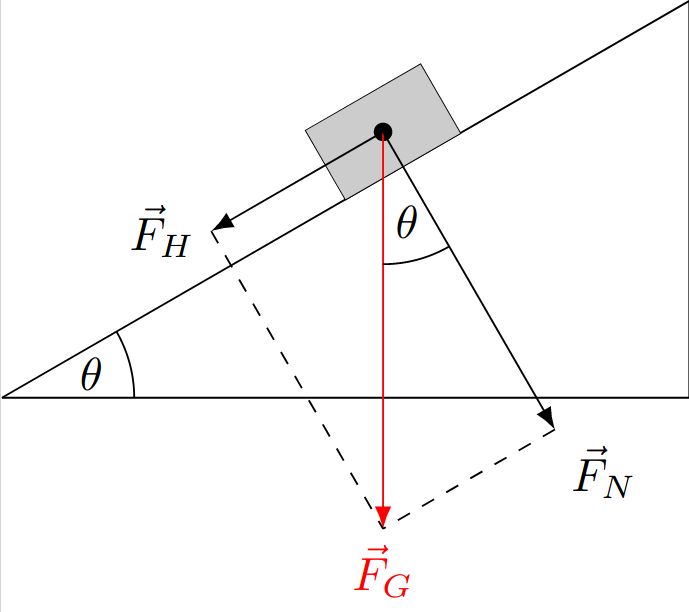Forces
Forces play an important role in our daily life. However, sometimes we misuse the term. We, therefore, want to start with the definition of what is called a force in physics.
Description
If a force acts on an object, it starts to move or changes its direction of motion. The force is a vector quantity, i.e. it is characterized by an absolute value and a direction, similar to velocity and acceleration vectors. Hence, we illustrate forces with the help of arrows, and the length of the arrow is proportional to the force. As a result of this, different forces acting on one body have to be superimposed by calculating the resulting vector. On the other hand, every force can be decomposed into additional force.
Decomposition & Superposition
In order to understand the concept of decomposition of forces better, we look at the example of an object sliding over an inclined plane as a result of the gravitational force $F_G$ acting on the object. We first have to decompose $F_G$ into the downhill force $F_H$, which is responsible for the acceleration of the object, and the normal force $F_N$ which is totally compensated by the plane. For this example, we can calculate the downhill force with
$$\boxed{F_H = F_G\sin\theta}$$
where $\theta$ is the angle of inclination. In contrast to this, the normal force is then given as
$$\boxed{F_N = F_G\cos\theta}$$
This page contains 317 words and 1885 characters.
Last modified: 2022-10-01 17:07:03 by mustafa



